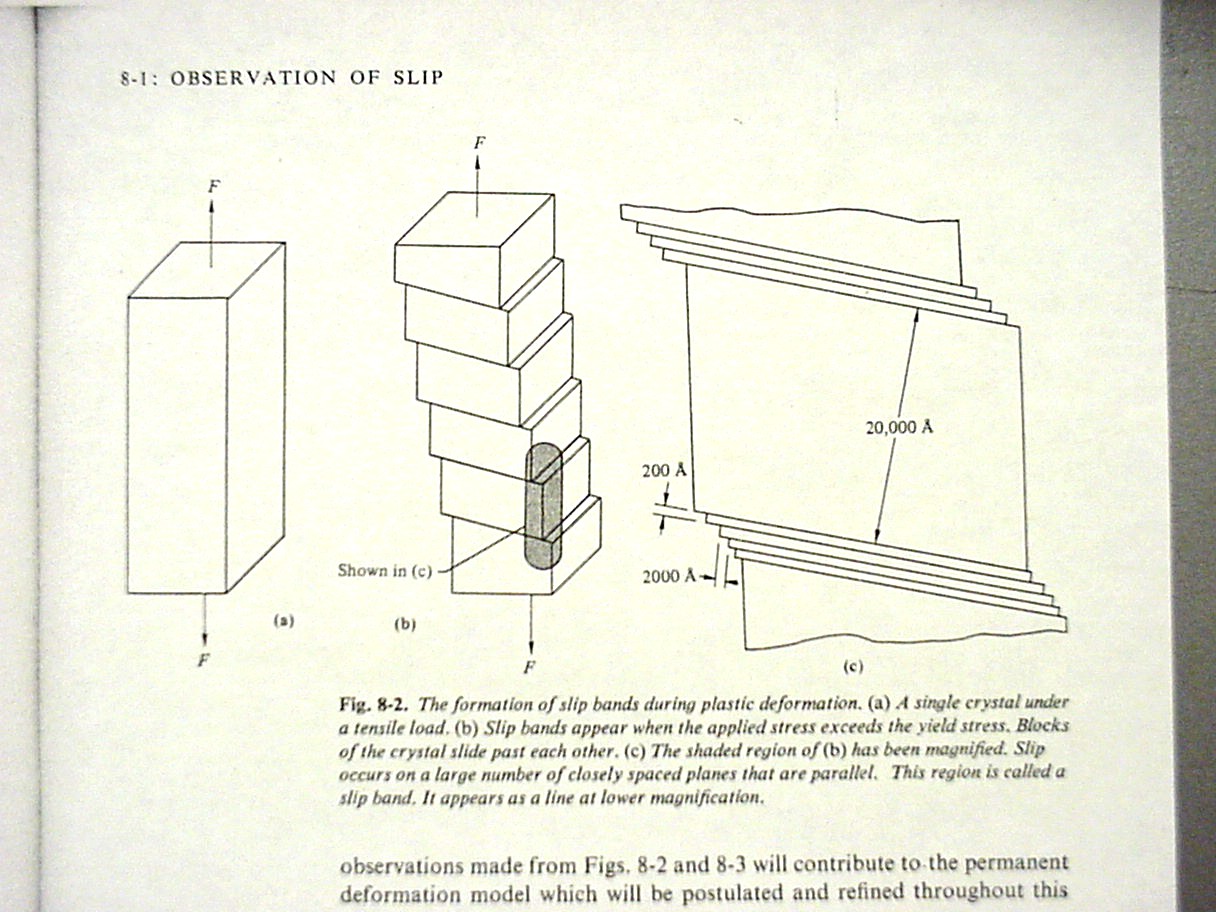Virtual Lab Fatigue Test
The Nature of Fatigue
Close the window to return to the fatigue test
We have seen that fatigue leads to fracture under repeated application of stress or strain. We have also mentioned that fatigue is essentially the initiation and growth of cracks under cyclic loading. In this section we will discuss the mechanisms of fatigue failure. The word mechanism here refers to the microstructural response of the material under cyclic loads. Understanding the mechanism of failure leads the designer to important questions: Why did the mechanism(s) become operative? What caused the crack to initiate and grow? How does this lead to design decisions?
Some of the fundamental causes for crack initiation and growth are:
- Material defects
- Manufacturing defects
- Poor choice of material or heat treatment
- Poor choice of production technique
- Poor detailed design
- Unforeseen service environment or load
- Poor material property data
Any one or more of the above causes can lead to fatigue failure.
Fatigue Failure Mechanism in Crystalline Solids
Fatigue cracks nucleate (act as a nucleus or beginning) due to the movement of dislocations that produce fine slip bands at the crystal surfaces. Slip bands are regions where there is intense deformation due to shear motion between crystal planes.
To recapitulate, slip is the gliding of one crystal plane over another, and this is the most common mechanism of plastic deformation. Certain crystallographic planes and directions within a crystal lattice are more susceptible to slip than others, resulting in the appearance of bands of fine parallel slip lines at a crystal surface. The slip planes are the most densely packed atomic planes, and the slip directions are the most densely packed atomic directions in the lattice. Slip bands and slip lines are schematically shown below.

Figure 7.4.1. Slip band formation under static loading (from Eisenstadt, M.M. (1971), Introduction to Mechanical Properties of Materials, Macmillan.)
This process of slipping creates steps at the surface that are of the order of 1 to 0.01 micron (100 Angstroms) in height.
Although uniaxial loading produces the "staircase morphology" shown in Figs. 7.4.1 and 7.4.2a, cyclic loading produces surface morphology exhibiting sharp peaks and valleys, resulting from irreversible slip during load cycling.

Figure 7.4.2. a) Slip band staircase morphology (as in Fig. 7.4.1.) from static uniaxial loading; b) sharp peaks and valleys resulting from cyclic loading (from Hertzberg, R.W. (1983), Deformation and Fracture Mechanics of Engineering Materials (2nd ed), Wiley.)
Many investigators have shown that surface notches as seen in Fig. 7.4.2b serve as fatigue crack nucleation sites, and thus represent the initial stage in microcrack formation. We will look later at the rate of propagation of a fatigue crack.